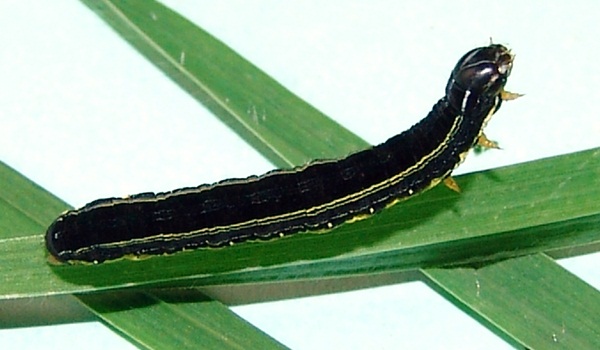Update: Plant Health News (2 Jan 13)
Here’s a taste of some of the latest stories about plant health, including the reaction of sweet potatoes to rising CO2, Spanish avocados affected by fungi and the conversion of banana waste into electricity. Click on the link to read more of the latest plant health news!
Update: New Pest & Disease Records (26 Dec 12)
We’ve selected a few of the latest new geographic, host and species records for plant pests and diseases from CAB Abstracts. Records this fortnight include Fusarium chlamydosporum causing wilt disease of guava in India, a new record of stored product pest Lepinotus reticulatus from China and the first report of the invasive stink bug Bagrada hilaris from New Mexico.
Deck The Halls With Boughs Of Holly
Holly leaves are a quintessential part of Christmas, whether they are hung up as decorations in boughs and wreaths, as a seasonal garnish on top of Christmas puddings or on the front of Christmas cards. Now new research published in the Botanical Journal of the Linnean Society has connected a combination of herbivore activity and…
The Climate Reality Project- Coffee Production Hit by Climate Change
[ustream id=27051308 hwaccel=1 version=3 width=480 height=302] Video streaming by Ustream Recently aired as part of The Climate Reality Project (founded by Al Gore), this documentary contains a 5 minute film about climate change and smallholder coffee production in Colombia. The film featured as part of a 24 hour online stream of climate documentaries and discussions…
Update: Plant Health News (19 Dec 12)
Here’s a taste of some of the latest stories about plant health, including the first harvest of seawater cucumbers, drought resistant corn increasing yields and the quantification of corn rootworm damage. Click on the link to read more of the latest plant health news!
Armyworms devastate crops in Zambia, threatening food security
Armyworms in Zambia are threatening food security by reducing crop yields. This was the message from former Agriculture Minister Eustarkio Kazong, speaking in an interview for Zambian radio station, QFM. Armyworms are attacking crops, causing major damage to maize, cassava, sorghum and rice. In Kabwe, the capital of the Central Province where the first cases…
Update: New Pest & Disease Records (12 Dec 12)
We’ve selected a few of the latest new geographic, host and species records for plant pests and diseases from CAB Abstracts. Records this fortnight include the first report of Clonostachys rosea causing root rot of soybean in the USA, Groundnut bud necrosis virus and Okra yellow vein mosaic virus infecting okra in India, and the first report…
Research Projects Into Improving Crop Plants Receive Major Funding
The University of Illinois has received a five year, $25 million grant from the Bill & Melinda Gates Foundation to improve the photosynthetic properties of key food crops, such as rice and cassava. The project, entitled ‘RIPE- Realising Increased Photosynthetic Efficiency’ has the potential to benefit farmers by improving the productivity of staple food crops. Increasing photosynthetic efficiency…


